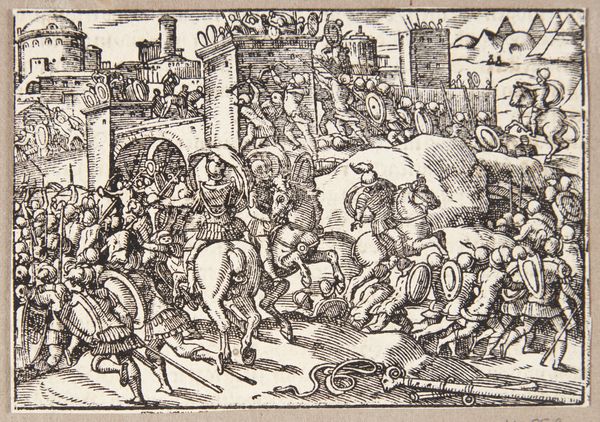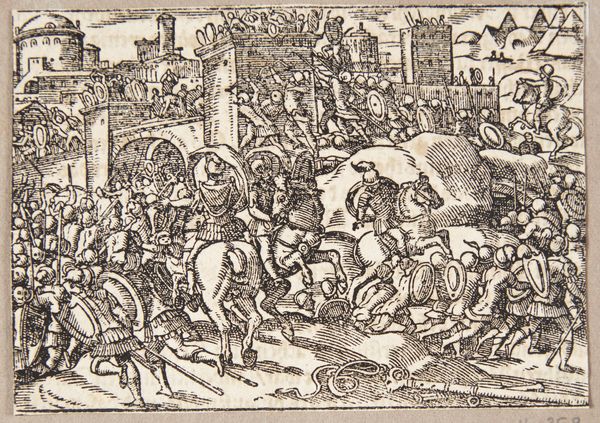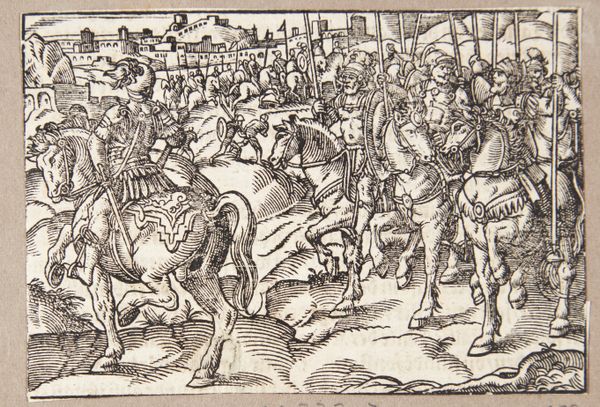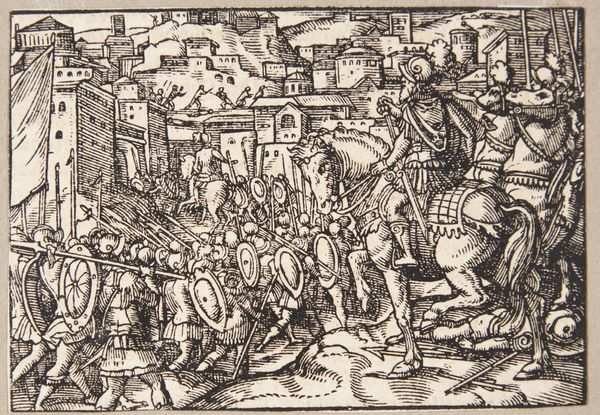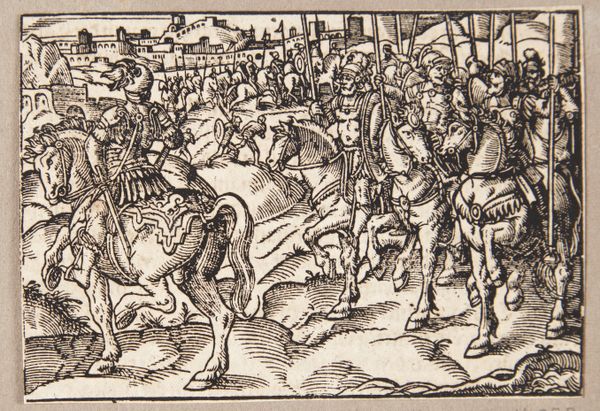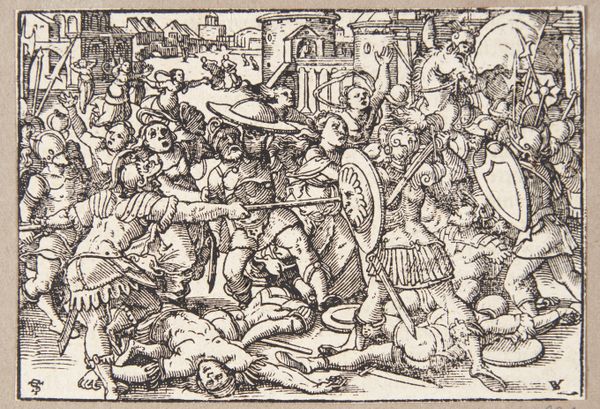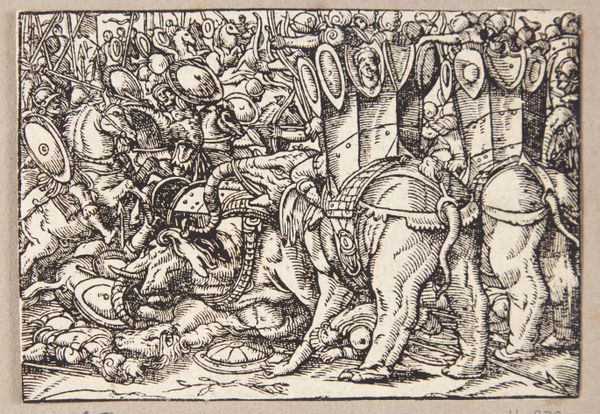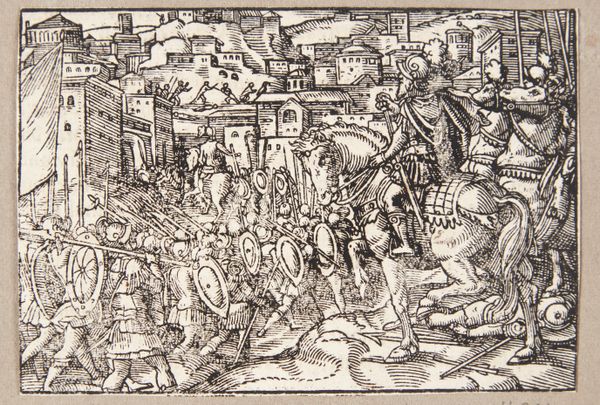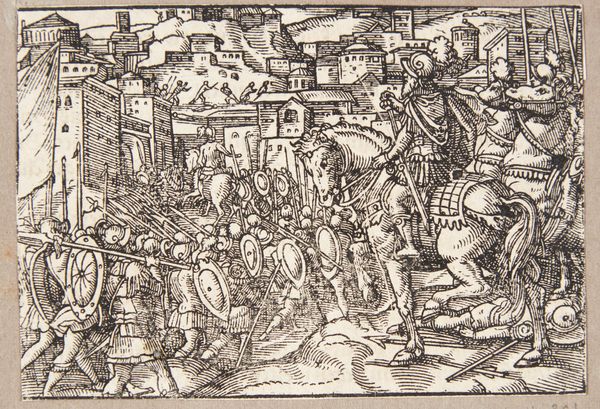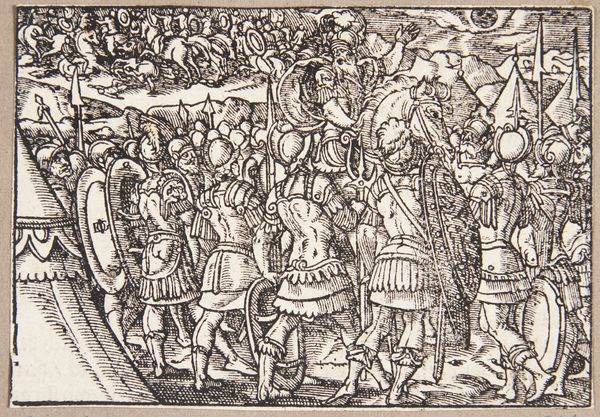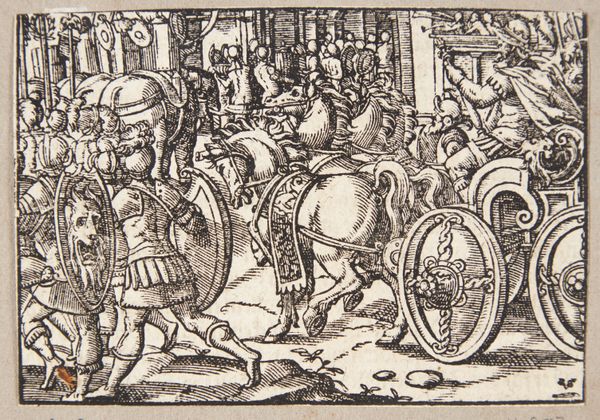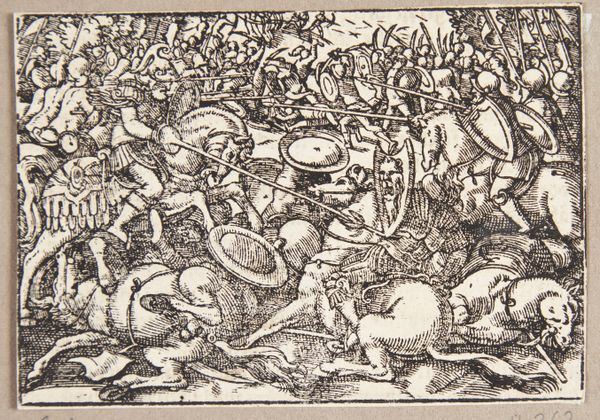
print, woodcut, engraving
#
narrative-art
# print
#
11_renaissance
#
woodcut
#
history-painting
#
northern-renaissance
#
engraving
Dimensions: 75 mm (height) x 105 mm (width) (bladmaal)
This tiny print, made by Tobias Stimmer around the 1570s, depicts the Romans conquering the Fidenates, rendered in woodcut on paper. It’s all about the line here, isn't it? Every detail is carved into the block, from the architecture to the chaotic battle scene. Consider the sheer labor involved: painstakingly removing slivers of wood to create the image in relief. It's a craft rooted in repetition, as each block can produce countless identical prints. The process itself speaks to the power of mass production, even in a pre-industrial age. Notice how the black lines define the composition, creating contrast and depth. The density of the lines conveys a sense of movement and turmoil, while the white spaces offer moments of respite. This contrast emphasizes the violence of the scene and the skill of the artist. So, next time you look at a print, remember the intricate process behind it. It's not just an image, it's the result of labor, skill, and a deep understanding of materials. By focusing on the making, we can challenge traditional distinctions between art and craft, gaining a richer understanding of the history of visual culture.
Comments
No comments
Be the first to comment and join the conversation on the ultimate creative platform.

